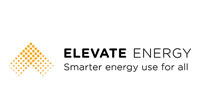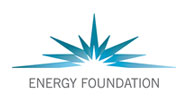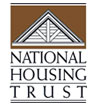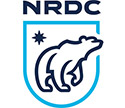SAHLLN Resource Hub
The SAHLLN Resource Hub is a central repository for information on financing energy and water efficiency and renewable energy in multifamily affordable housing properties. These resources are recommended by members of our network of affordable multifamily housing lenders, including Community Development Financial Institutions (CDFIs), housing finance agencies (HFAs), major financial institutions, and specialized green financing entities. Please help us grow this resource hub by submitting a resource!
The New York City Housing Authority (NYCHA) is the nation’s largest residential landlord, with a public housing portfolio that serves 400,000 of New York City’s lowest-income households who have few or no housing alternatives.In its 2016 NextGeneration NYCHA Sustainability Agenda, NYCHA set goals to reduce per-square-foot energy consumption...
Building on the first session on understanding the positive impacts of energy and water efficiency lending and the second on what building efficiency can look like at three different levels of capital investment, this third webinar based on Community Preservation Corporation’s Underwriting Efficiency Lender Handbook offered a...
Building on the first session on understanding the positive impacts of energy and water efficiency lending, this webinar provided a breakdown of what incorporating efficiency can look like at three different levels of capital investment as described in the Underwriting Efficiency Lender Handbook. The webinar reviewed low-cost efficiency measures...
This webinar, the first in a series of three trainings, provides an overview of how energy and water efficiency can be beneficial to both borrower and lender and outlines why recognizing the value of efficiency is a critical step toward unlocking investment opportunities that improve loan performance and ensure long-term financial stability. It...
Implementing green building measures in affordable housing is an important way to reduce costs and improve building performance, helping to preserve New York’s much-needed affordable housing supply. Public agencies and utility companies in New York City offer a diverse array of programs to improve the energy efficiency of affordable housing...
This market analysis examines the current landscape for building owners and lenders seeking to integrate energy efficiency and utility savings into building assessments and retrofit plans, and to utilize the data to enhance traditional loans. It examines real properties that successfully utilize existing programs to help building owners account...
This report documents the impact of energy use and price variations on commercial mortgage default risk in five buildings: an office building in the Denver area, two office buildings in northern California, a hotel in the Denver area, and a multi-family residential building in San Francisco. We used parametric energy simulation to analyze the...
This report provides an overview of energy efficiency financing programs nationwide—in both the single family (SF) and multifamily (MF) sectors—that are reaching LMI households. These households are defined in multiple ways—for example, for program qualification. For the purpose of examining sector characteristics, this report defines LMI...
To better connect impact investors and CDFIs, Aeris collaborated with the Global Impact Investing Network (the GIIN) through the IRIS Initiative to standardize impact metrics commonly reported by CDFIs, with a goal of better supporting investor analysis and investment decision-making. IRIS is the catalog of generally accepted performance metrics...
At every transaction, mortgage lenders have an opportunity to talk to building owners about improving building efficiency. By realizing the benefits of efficiency on loan performance and incentivizing owners to pursue efficiency, lenders encourage investments that will strengthen cash flow, improve property value, and lower the risk of delinquency...





